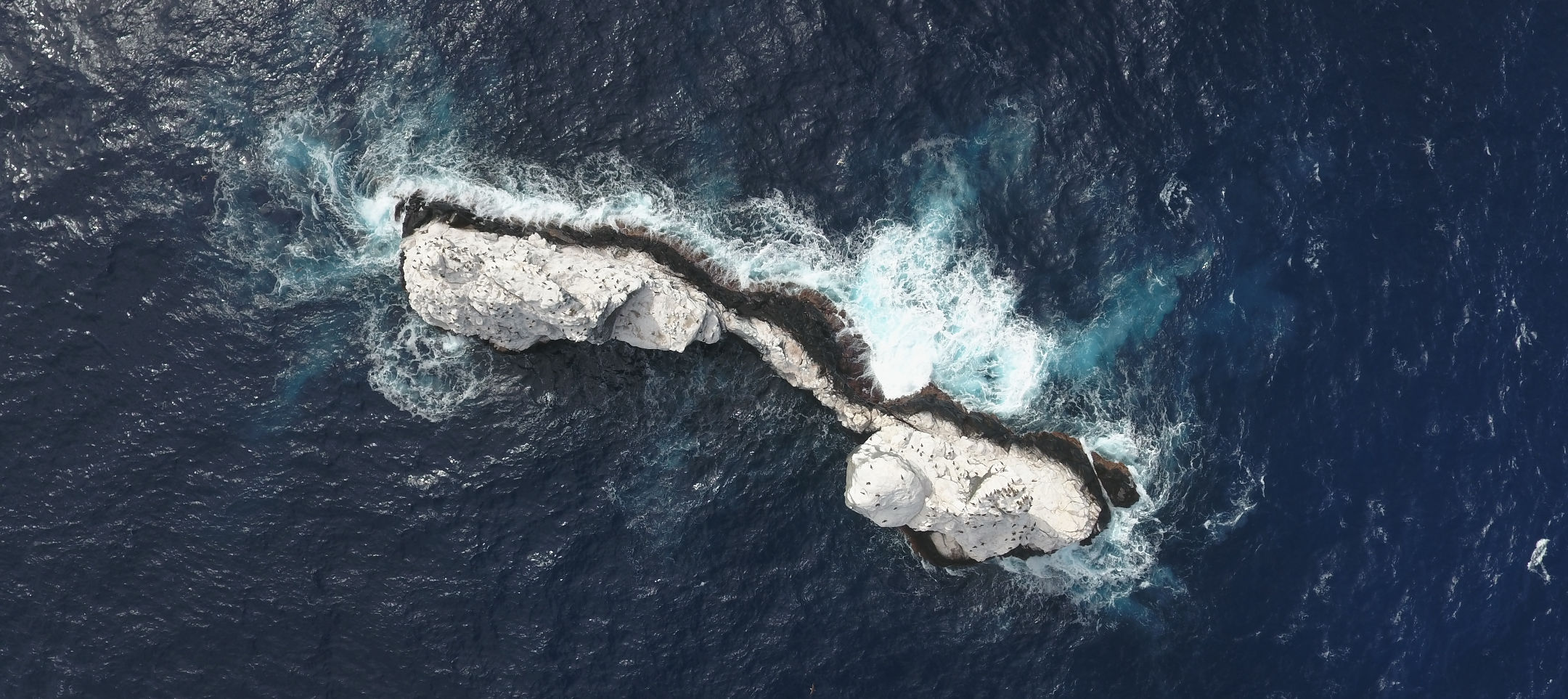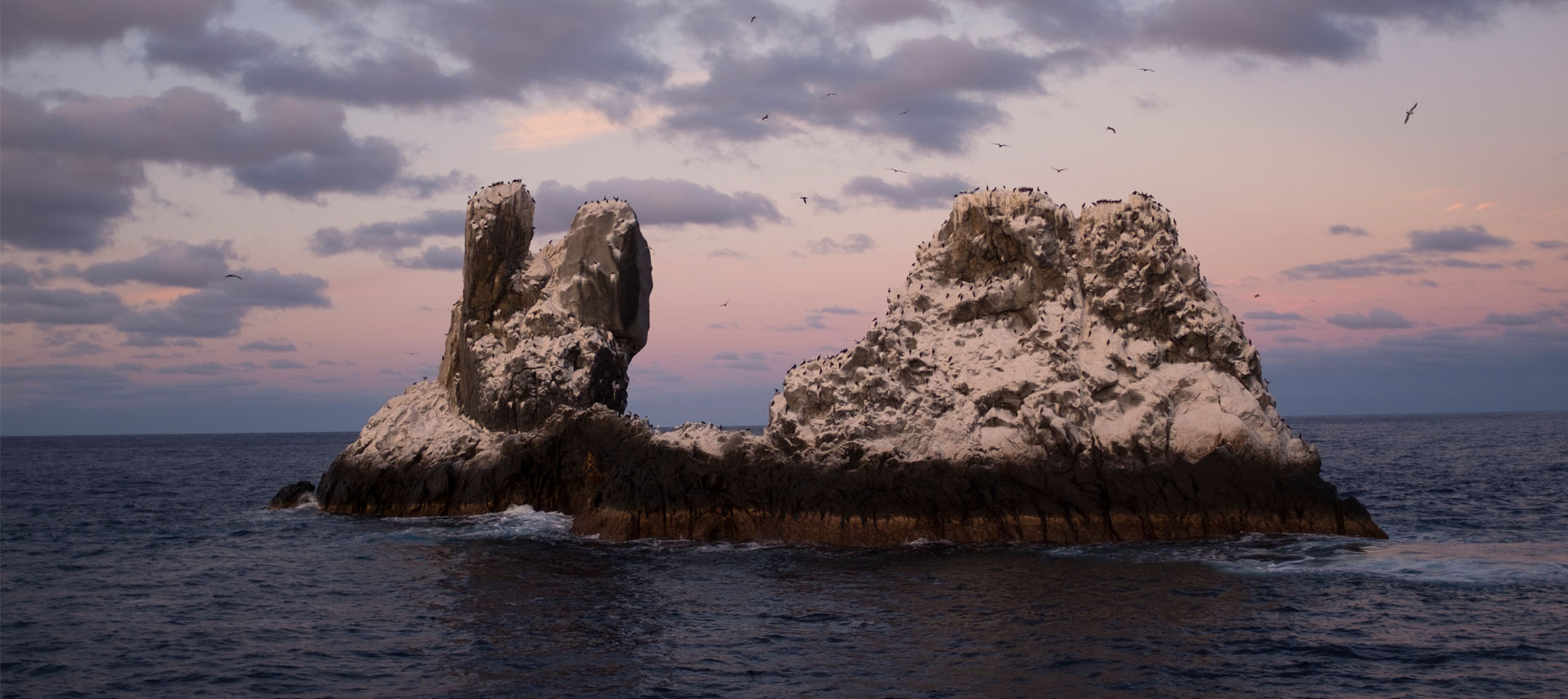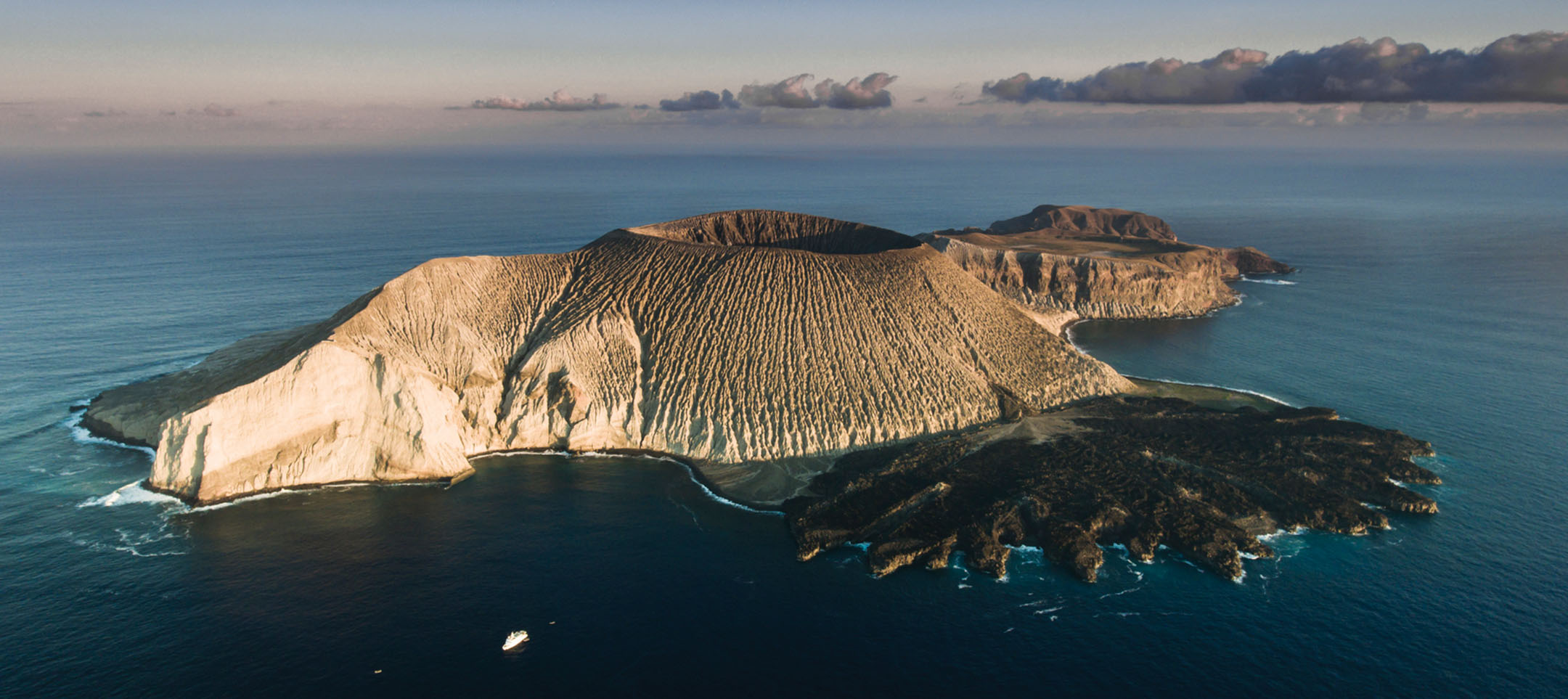Socorro Island is well-known for its manta rays and hammerhead sharks. And it is one of the most famous places in the world to swim with humpback whales.
Marine life
Socorro and its sister islands form one of the rarest spots in the world’s oceans that is inhabited by so many species of pelagic fish and mammals. Among these grand creatures are humpback whales, giant manta rays, dolphins and at least ten shark species (whale sharks, silver-tips, white-tip reef sharks, hammerheads, scalloped hammerheads, tiger sharks, silk sharks, Galapagos sharks, tiger sharks, grey reef sharks).
Its humpback whale population visits these waters usually between January and mid-March. These magnificent giants can be mostly observed from the surface, swimming or breaching, but rarely underwater.
The giant manta rays that call the islands home are uniquely friendly and playful. Despite their sometimes threatening size, they do not shy away from divers but actually seek them out, observe them and swim around them along with the dolphins who also tend to be curious and uninhibited around divers.
The islands:
1. Socorro Island
The island has several delightful dive spots. Cabo Pearce on its east side does not disappoint when it comes to dolphins. Currents may be a bit strong at times and it is may be helpful to settle in some protected areas among the boulders, but they give a great opportunity for watching mantas (black and chevron as well) and silky sharks whiz by, and to marvel at humpback whales.

Punta Costa is a colourful reef with its hard corals and medley of gorgeous Pacific tropical fish like parrot fish, trigger fish and trumpet fish. The elusive tiger shark also makes its presence known. Plenty of dolphins and torpedo rays provide lively entertainment while a turtle or two gently swims by.
Roca O’Neil is home to a large school of scalloped hammerhead sharks. Silk, silver-tip, Galapagos and grey reef sharks round out the eclectic mix with various species of tropical fish hovering over the reef. Diamond sting rays majestically fly in the blue, always ready for a chance encounter.
2. Roca Partida (Split Rock)
It is the smallest of the four islands, measuring 100m in length and 8m in width. Its two peaks rise out of the ocean and are split by a low-lying rock area, hence the name. While on the surface it lacks all living forms (except for some booby birds and gulls that breed there), beneath it the sea teems with rich marine life.

Its rich eco system is home to large schools of jackfish and tuna. Mantas can also be spotted and the small crevices hide smaller fish species. The caves at around 13m are home to numerous silver-tip sharks. Divers have branded this spot one of the most magnificent diving experiences in the world and no wonder. Schools of hammerhead, white-tip, whale and Galapagos sharks cruise the area along with playful dolphins.
3. San Benedicto
The third largest of the four islands, this uninhabited island is 4.8km long and measures 2.4km at its widest part. It boasts two prominent peaks, the tallest, on the southern part of the island actually forming a volcanic crater. After its 1952-1953 eruption (the last one to date), life slowly began to return with seabirds leading the way that chose the north part of the island for breeding. The land crab also survived and flora slowly began to reclaim life, listing ten plant taxa among its ranks, including shrubs, vines, herbs and grass.

But the secret of San Benedicto lies beneath, in the area called The Boiler, where divers interact and become very personal with giant Pacific manta rays, some with a wingspan of up to 8m. They will meet and greet divers and will remain with them throughout their dives, curiously playing. The encounters with such magnificent creatures give opportunity for ever-lasting memories. Migratory jacks will also cruise by as will schools of hammerheads and bottle-nose dolphins. Another part of the island is called The Canyon where large schools of hammerhead, Galapagos, silky, dusky and white-tip sharks have been known to appear out of the deep blue.
Diving skills
The islands are completely isolated in the great vastness of the Pacific Ocean. Currents and waves may become a hindrance in some instances, and all dives are performed in the blue (with no sea bottom in sight), all of which call for strong buoyancy skills.
Diving season
The best time to travel to and dive at the islands is from November until May. This is when the waters and sea conditions of the Pacific in this region are the calmest. Weather is mostly sunny with some intermittent showers. While mantas are here all year round, the winter months also provide an excellent and unparalleled opportunity to spot whale sharks and humpback whales that breed and calve in the area.
On the mainland in Mexico this period is also favoured by general tourism which gives rise to increased flight and hotel rates.
Snorkelling
The islands are a diver’s Paradise, they do not cater to snorkellers. On some rare occasions divers geared with snorkel may jump in to observe whale sharks or humpback whales from the surface of the water. Before doing so, always check with your guides and captain as sea conditions and specific spots may be hazardous.
Interesting facts
In 2016 the archipelago became a UNESCO World Heritage Site and in 2017 it was declared to be a marine reserve and national park in Mexico.
Due to its fragile and unique eco system, and thanks to its newly acquired protected status, divers must adhere to strict regulations concerning diving practices in the region. No hooks, gloves, knives or lights (camera lights are permitted) are permitted to be used.
History of their namesake:
Located about 450km from Los Cabos, Mexico, Socorro is the largest of four volcanic islands in the vast Pacific that form the Revillagigedo Archipelago. Its first eruption occurred around 3090 BC. The lowlands are marked by small craters, ravines and lava flows, and the vegetation is mostly made up of furrows, shrubs and cacti. The north ridge of its summit (called Mount Evermann after the American ichthyologist) has a much richer vegetation that boasts trees and even orchids. Its wildlife mainly consists of a variety of bird species and the occasional lizard and land crab. Locusts were introduced to the island by human activity and to this day wreak havoc on the vegetation when they swarm twice a year.
The island had been given a name several times by Spanish explorers. First it was named Santo Tomas when it was discovered in 1533. Then it was given the name Isla Anublada (Cloudy Island) in 1542 because of the clouds that often form on the northern slopes of the mountain. It got its final name in 1608, Isla Socorro, after Our Lady of Perpetual Help (Virgen del Perpetuo Socorro).
The island has no other human inhabitants than the staff of a naval station and their families.